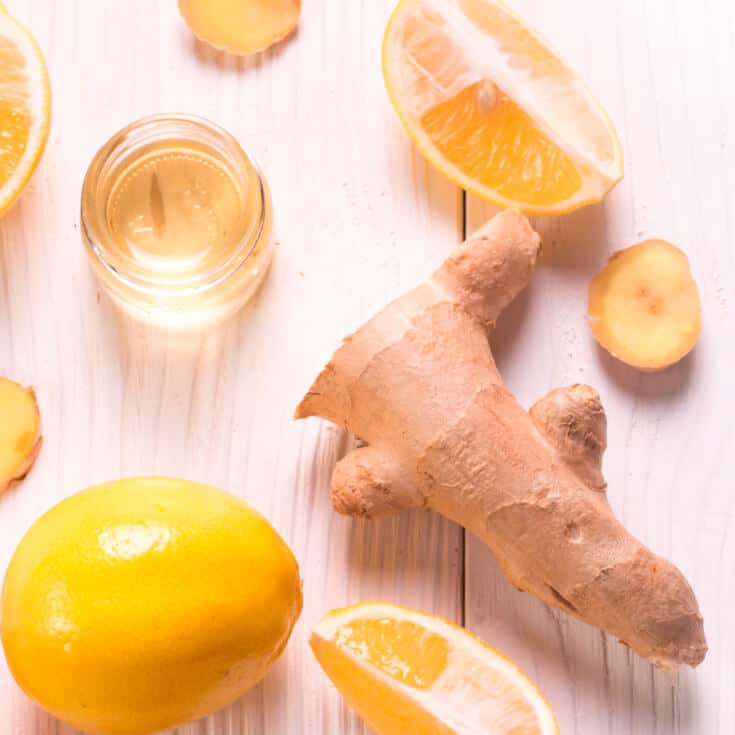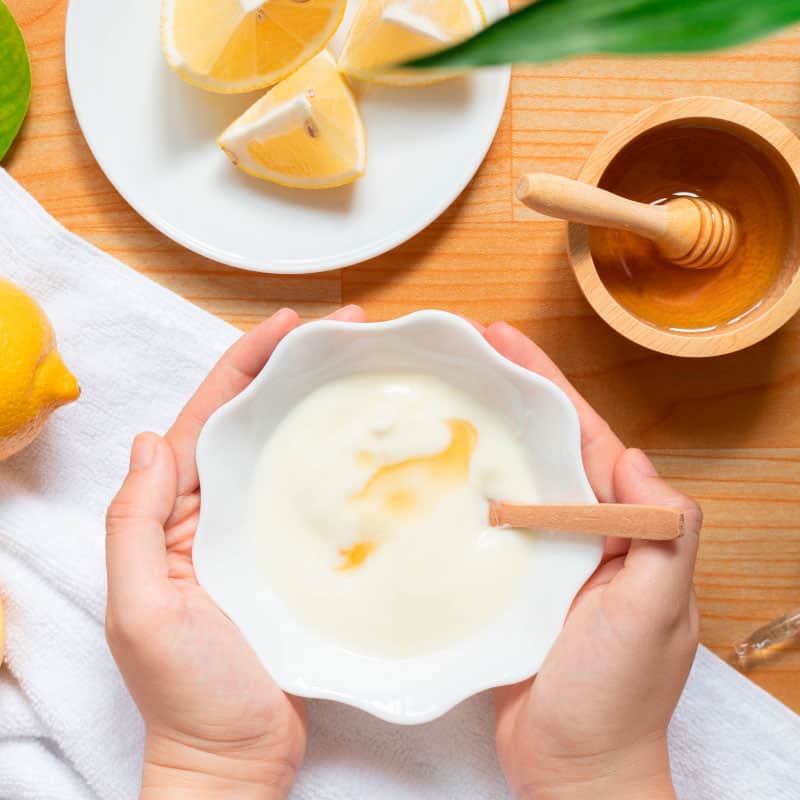This Dr. Axe content is medically reviewed or fact checked to ensure factually accurate information.
With strict editorial sourcing guidelines, we only link to academic research institutions, reputable media sites and, when research is available, medically peer-reviewed studies. Note that the numbers in parentheses (1, 2, etc.) are clickable links to these studies.
The information in our articles is NOT intended to replace a one-on-one relationship with a qualified health care professional and is not intended as medical advice.
This article is based on scientific evidence, written by experts and fact checked by our trained editorial staff. Note that the numbers in parentheses (1, 2, etc.) are clickable links to medically peer-reviewed studies.
Our team includes licensed nutritionists and dietitians, certified health education specialists, as well as certified strength and conditioning specialists, personal trainers and corrective exercise specialists. Our team aims to be not only thorough with its research, but also objective and unbiased.
The information in our articles is NOT intended to replace a one-on-one relationship with a qualified health care professional and is not intended as medical advice.
What Is Squalane Oil? Plus, Its Powerful Beauty Benefits
August 16, 2019

For a long time, “oil” was a bad word when it came to our skin, but now the use of beneficial oils has gone very mainstream. And for good reason too! Squalane oil is one of the many skin-boosting oils, and it’s typically recommended for all skin types.
Squalene is actually already present in our skin, but like collagen, it decreases as we age. Squalane (notice the different spelling) is a topical, natural product you can use to add back lost moisture and more!
What are the benefits of squalane oil? Benefits can include increased hydration of the skin, resulting in a healthier glow and maybe even a reduction in signs of aging, a decrease in redness, reduced breakouts and silkier hair, too. Animal and in vitro studies have even linked both squalene and squalane with anti-cancer, antioxidant, detoxifying, skin-hydrating and skin-softening abilities.
What Is Squalane Oil?
Squalane oil is created from squalene, which is a poly-unsaturated hydrocarbon liquid naturally found in animals and plants. Squalene is also a fat-soluble antioxidant that makes up about 12 percent of our skin’s sebum. What is sebum? Sebum is an oily substance secreted by the the sebaceous glands that helps to keep skin and hair moisturized.
The process of turning squalene into squalane takes it from being an unsaturated oil to a saturated one. Squalane oil is 100 percent saturated fat, which makes it extremely stable (even more stable than coconut oil, which is about 90 percent saturated fat).
What does squalane do for the skin? As a lightweight, plant-derived substance high in fatty acids and antioxidants, it can help to support optimal skin health. Does squalane oil clog pores? It is considered to be non-comedogenic, which means it should not cause blocked pores. Squalane is also completely colorless and odorless, making it very easy to use all over the body and great for sensitive skin.
You can find 100 percent pure squalane oil in stores and online. You’ll also see it as a common ingredient in many personal care and cosmetic products, including lip balm, lotion, sunscreen, foundation and lipstick.
Where Does It Come From?
Squalene is processed (hydrogenated) to become squalane oil. In the past, squalane was traditionally derived from the livers of deep-sea sharks. Now, pure squalane oil is also made from more environmentally-friendly and cruelty-free plant sources, especially olives and sugarcane. It can also be extracted from rice bran and wheat germ. There’s also amaranthus squalane oil, which comes from the ancient grain known as amaranth.
Squalane vs. Squalene
Which is better: squalene or squalane? Squalene oil is an unsaturated oil, which makes it unstable and prone to go rancid quickly. As you would guess, rancid oil is certainly not something you want to be using on your body. So you don’t want to be using squalene on your skin, but when found naturally in foods (like olive oil) squalene has demonstrated potential health benefits.
Squalene (with an “e”) has been shown in scientific research to decrease skin damage by UV radiation, LDL levels and cholesterol in the blood, prevent cardiovascular diseases and has anti-tumor and anticancer effects against ovarian, breast, lung and colon cancer. Research has linked a Mediterranean diet high in olive oil with a reduced risk of certain types of cancer. It’s believed the high squalene content of olive oil is a major reason for the cancer risk-reducing effect of olive oil.
Squalane is a saturated oil made from squalene, but it’s much more stable than squalene. In addition to a much lengthier shelf life, squalane is also odorless and colorless. Squalane can come from animal sources so it is a good idea to look for varieties that are plant-derived. If you’re avoiding wheat or grains, you’ll also want to make sure that it comes from a plant source (such as olives).
According to one licensed esthetician, “Squalene alone is very unstable, comedogenic for some skin types and will go rancid rather quickly. Squalane is when squalene goes through hydrogenation processing. This means it turns the squalene from an unsaturated oil into a 100 percent saturated oil. This is even more than coconut oil, which is around 80 to 90 percent. Why this is important is because our skin does not produce saturated fatty acids on its own, and it’s essential for true moisturization and health of the skin. Plus, it’s non-comedogenic and suitable for all skin types!”
History and Interesting Facts
Traditionally, squalane was obtained from sharks in the Pacific ocean and has a history of use by Asian cultures for many different health concerns. Squalene from sharks is still used to this day in cosmetic products as well as vitamin supplements and vaccines. According to a 2012 report published by the French ocean conservation nonprofit BLOOM, an estimated 90 percent of the world shark liver oil production is used by cosmetic makers, which they say corresponds to 2.7 million deep-sea sharks caught every year.
Squalene fisheries are still in operation today, but in recent years, the poaching of sharks for squalane has been frowned upon more and more. And although it’s around 30 percent more expensive to produce squalane from plant sources, many companies are making the switch and leaving the 60 shark species fished for their oil (including many endangered species) alone. Some countries have also put laws into place to limit deep-sea shark fishing. Be sure to check labels to make sure no sharks were harmed in the making of your squalane oil.
Related: Bakuchiol: A ‘More Natural Retinol’ That’s Equally Effective for Skin
5 Potential Squalane Oil Benefits
This lightweight oil is not only great for skin, but it can also be used for hair and nails.
1. Moisturizes
Using squalane oil for skin can help to keep it from feeling and looking dry, rough and tight. It’s so effective that it’s actually one of the most common moisturizing agents used in cosmetic products because of its desirable characteristics including:
- Excellent skin-penetration
- Emollient (skin softening)
- Antioxidant
- High affinity with the skin and its natural lipids
- Non-irritating
- Non-allergenic
- Non-comedogenic
A clinical study demonstrates how along with other helpful ingredients, squalane can really help to improve dry skin issues. This study, published in 2004 in Therapeutic Apheresis and Dialysis, had 20 subjects dealing with mild uremic pruritis (a chronic itching condition related to kidney disease) use either a gel containing 80 percent water as well as aloe vera extract, vitamin E and squalane twice a day for two weeks or use nothing. After two weeks of using the topical gel containing squalane along with two additional weeks of no treatment, this treatment group had less dryness and itching compared to the control group.
2. Fights Wrinkles
Is squalane oil good for wrinkles? Using a squalane face oil just may have you looking a little more youthful. Since our own squalene production decreases as we age, using squalane oil on our skin can help to add back moisture. Drier skin is more prone to wrinkles, so using squalane oil can help to moisturize the skin and ward off fine lines — and also may make current signs of aging less noticeable.
According to Dr. Michele Farber of Schweiger Dermatology Group in New York City, “It works as an antioxidant and emollient to pack an anti-aging and moisture-boosting punch.” It also helps other anti-aging ingredients, especially topical hyaluronic acid, to work better.
3. Reduces Pimples
Does squalane oil cause breakouts? No, in fact, it may help them, which is why some experts even recommend squalane oil for acne. If you read a squalane oil review, you’ll likely see people that have struggled with breakouts claim squalane has been helpful. Also, don’t be too shocked if you see squalane landing on lists of best facial oils for acne-prone skin.
The benefits of using squalane oil for acne may surprise you, but if you haven’t heard this before — not adding moisture to breakout-prone skin is actually one of the worst things you can do. It seems like acne needs a dry environment to make it go away, but when you deny your skin moisture, it actually signals the skin to produce more oil. So, by using a non-comedogenic oil like squalene, you can actually help to calm down that oil production and make breakouts less likely and less intense. In addition to being non-comedogenic, squalane oil is also antibacterial.
4. Helps Fight Eczema
Due to its excellent moisturizing and emollient abilities, squalane is considered to be a helpful ingredient for skin conditions including eczema (atopic dermatitis) and contact dermatitis. As pointed out in one scientific review, “An added quality of squalane is that even though it is technically oil, it is less greasy, odorless, non-comedogenic, antibacterial and safe for sensitive skin. Moreover, it is also effective for treating skin disorders such as contact, seborrheic or atopic dermatitis.”
5. Boosts Hair Health
Squalene is truly a multitasker when it comes to your beauty routine. Similar to using it on your skin, adding squalane to your hair mimics the natural sebum produced on your scalp. Using squalane oil on your hair can definitely make it look more vibrant. In addition to adding shine, it can help to tame frizz, flyaways and split ends. You can also apply it to hair for added heat protection before using a blow dryer or other hair tools.
How to Use Squalane Oil
The best squalane oil is certainly plant-derived (like olive squalane oil) and not animal-derived. It’s easy to use squalane oil for skin, and you can do it anytime of day! Many people like to make it a part of their nighttime and/or morning routine.
To use squalane oil for your face, first make sure your face is freshly cleansed. Next, simply put one to three drops of oil in your hands and rub them together to warm the oil. Then gently pat it into your skin. It only takes a small amount to cover the entire face. You can also apply a few drops on your neck and décolletage. This can be done day and/or night.
If your face is on the dry side, the upper amount of drops (three) is likely necessary. If you’re on the oilier side, it’s recommended to slightly dampen your skin first with water and then apply the oil. You can also mix a couple of drops squalane into your usual moisturizer and apply it that way.
You can use squalane oil under the eyes, which is why you’ll often find it in many eye treatments. When you’re applying it to your face, you can include the eye area (of course, being careful not to get it too close to your eyes as with any product). Some squalane oil reviews even mention how it’s particularly helpful for crepey, dry patches around the eyes.
Now are you wondering how to use squalane oil on hair? It’s also very easy! To use squalane for hair, rub a few drops of oil between your hands and smooth it over wet or dry hair. If you have certain concerns, such as flyaways up on top or split ends on the bottom, concentrate on those areas of your hair with the oil.
You can also use a couple drops of squalane to moisturize your nails and cuticles, and any other area of the body that feels dry.
Who Should Use It?
Pure squalane oil is suitable for all skin types, including oily, dry, combination, normal, sensitive, mature and even acne-prone.
Are you surprised that people with sensitive skin make the list of potential users? Research suggests that squalane is very unlikely to be an irritant or a skincare ingredient that makes skin more sensitive. Of course, if you have a negative reaction to squalane oil, you should discontinue use.
You can find pure, organic squalene oil, which is a great general option for all skin types. You can also find variations combined with other oils.
If you’re comparing rosehip oil versus squalane or marula oil versus squalane, all three are touted for their high antioxidant and fatty acid contents, which enable them to provide moisturizing and anti-aging benefits. So which one is best? It’s really a matter of personal preference and seeing which one benefits your skin the most. You may love all three, but squalene is the least comedogenic of them.
Risks and Side Effects
Does squalane oil go bad? Squalane is very stable and has a long shelf life. But with that said, all oils eventually go bad or become rancid. Typically, squalane oils can last about two years if stored well (away from heat and light).
It’s key to buy squalane oil because unhydrogenated squalene oil oxidizes once it comes in contact with air and will become rancid, which means it will not benefit your skin. The hydrogenation makes squalane resistant to oxidation, which is a good thing for a topical oil.
If you have a negative reaction to squalane oils or a product containing squalane, discontinue use.
Final Thoughts
- Squalene is a fat-soluble antioxidant that our skin produces in our sebum, but the amount produced decreases as we age. It’s also found naturally in animal and plant sources.
- Squalane oil can be made from squalene in shark livers, but many beauty companies are now using plant sources like olives and sugarcane, which are much more environmentally-friendly options.
- Squalane is loved by cosmetic formulators and users for the fact that it’s very moisturizing, highly stable, non-irritating and non-comedogenic.
- Squalane oil uses aren’t just limited to the face, but can benefit the entire body, including your hair and scalp.
- Benefits of squalane oil may include increased moisture, reduced signs of aging and relief from acne and skin conditions like eczema.
- You can buy pure squalene oil or you can buy it combined with other skin-boosting natural ingredients.










